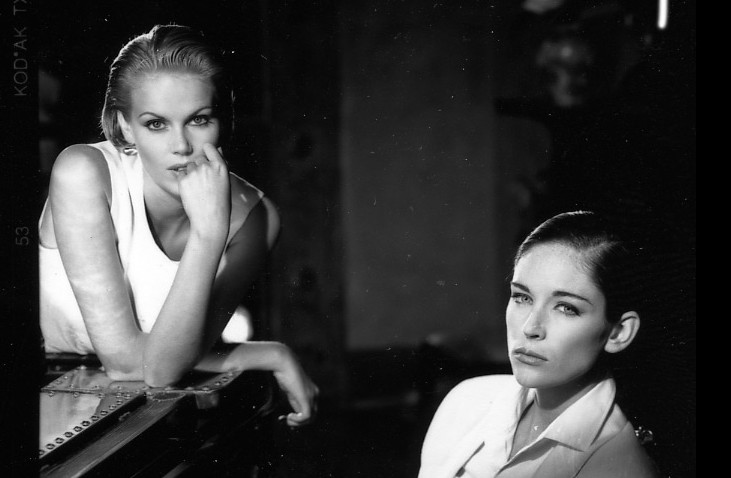I missed one other semi automated focusing function of the D800 that is very handy
with manual focus.
I'm not sure if this was an intended function, but it works very nicely.
I call it face detection assisted manual focus.
In live view mode you can use face detection even in manual focus mode so that when you zoom in on the LCD screen you
do not have to use the joy stick to find the face.
This is how it works. You set the camera to AF face detection and point the camera at the face.
You then switch to manual focus. The face recognition continues working. It continues working for many shots and will
recognize new "faces" too.
The advantage with this is that when you zoom in on the LCD screen the camera automatically zooms in on the face regardless of where it is in frame.
Also what is really neat is that this also works if you have more than one face in the shot.

Lets say I was shooting the shot above. In this "face detection assisted manual focus" mode
the camera would find both faces, but target the larger one. I can then zoom in with the LCD screen
and check focus. Then without zooming back out I can switch to the other face and check focus there.
This is extremely helpful when using tilt shift lenses to focus on two models faces while keeping depth of field
small. First roughly set your tilt. Focus on the close model, zoom in, fine focus, toggle to the other model and check the focus.
If it's not quite right make a small adjustment to the tilt. Check focus again and toggle back to the other face.
End result being something like this:

Again this example was shot on film, I just used it to help illustrate the method.
However keep in mind that I shot this with the Fuji gx680 with it's big 6x8cm focusing screen
and it's moving high magnification focusing loup.
http://youtu.be/V74h4VaQSQ4While phase one has a tilt shift lens it is just way to hard to use it in a situation like the above photo
due to the small viewfinder, phase one live view limitations and relatively dark and slow lens with a 5.6
maximum aperture.
Another really good use for this is if you are shooting a group of models and simply want to take a close look at each
models expression or angle of their pose. Extremely useful when using very high contrast light such as a Fresnel
where you really want each model to hold their head at the angle that is more flattering for their face.
I also discussed with Nikon implementing a manual focus assist more with two targets rather than face detection.
This would be particularly useful for using tilt shift lenses letting you toggle between the two targets when in zoomed in mode.
They were very receptive and believe that it could be implemented in firmware.
I also suggested movable guide lines for assisting composition for advertising layouts. That too can be done in firmware both in the optical viewfinder
and the LCD screen.